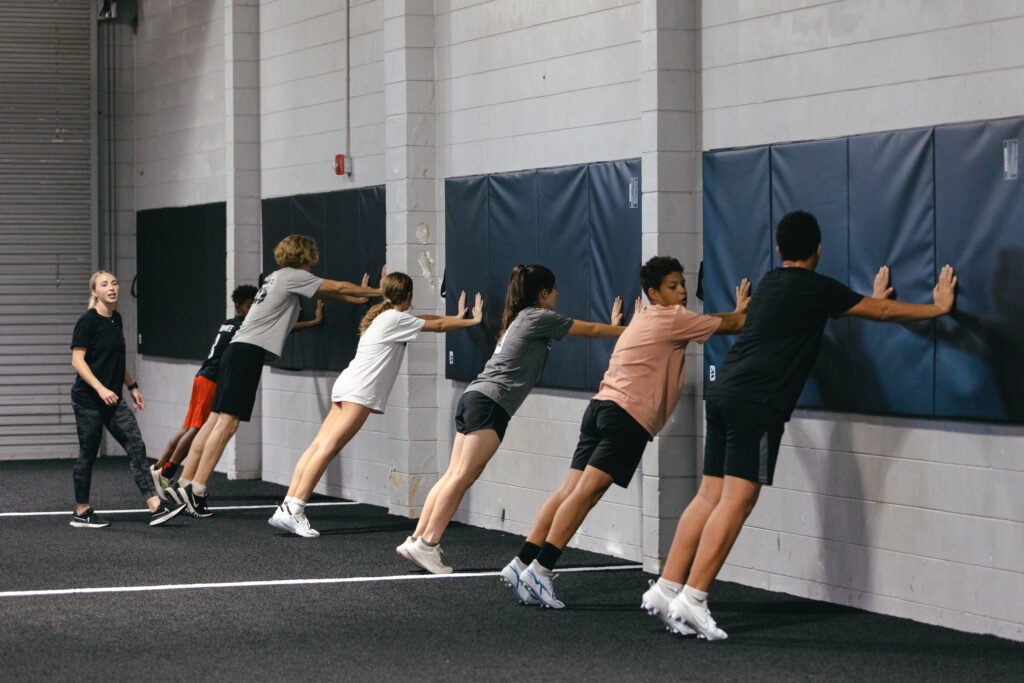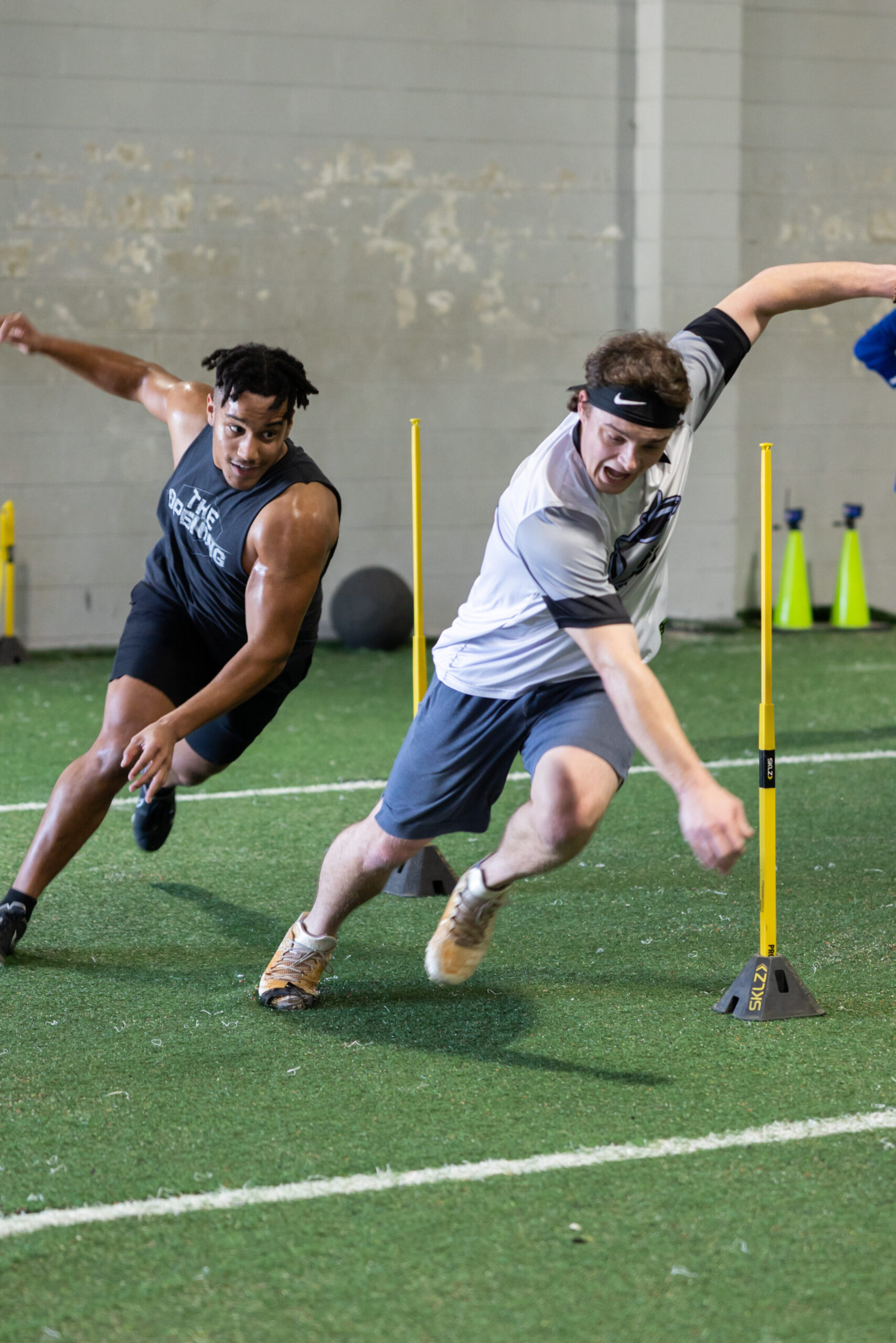
Movement Training – Speed and Agility
By: Daniel Sharvit
_____________________________________
Bigger. Faster. Stronger. Quicker. More Agile. Explosive. Powerful. All these terms describe what you may want out of your athlete. Some athletes may be naturally predisposed to excel at these traits and some require more training to expose their abilities. Our goal is to safely progress athletes so that they maximize their potential outputs in all of these categories. To get faster, it’s important to run fast. To get stronger, it’s important to lift weights. If you want to reach your full-speed potential, some principles are pivotal to follow. For simplicity’s sake, I am going to use linear acceleration as an example, but these concepts can be applied in any plane of motion.
KINETIC CHAIN
Our bodies are connected through something called the fascial system. The fascial system is a structural combination including your bones, muscles, ligaments, and tendons. Everything is layered together almost like a wedding cake. If you removed a layer of the cake like the frosting, one it just wouldn’t taste as good, and two it would lose some structural integrity. Your body acts the same. If certain musculature is out of alignment, the appropriate muscles won’t fire when moving at high speeds and you’ll subsequently leak energy through the system. In addition to that, you may be setting your body up in not ideal positions and increasing your risk for injury. That is why we always start our speed and agility sessions with some type of POSTURAL work. To reinforce proper posture and firing patterns.
POSTURE
During acceleration, shuffling, cutting, and sprinting there are some key shapes or postures we look to teach and emphasize when coaching movement. Before speed is added to the movement, setting up the athletes in the positions we want to achieve is key. For example, during acceleration (0-20yds) it’s ideal to be leaning forward, having tension through the torso, and having a big knee drive. Of course there will always be more teaching cues, these three things are pertinent to accelerating safely and efficiently. So how do we teach it? By having an anchor to hold. If we add a wall and allow the athletes to lean into it with their arms extended, it can help us spend more time in that lean without falling over. So you can imagine a pushup position up against a wall. Now when you sprint, you are never going to have two legs on the ground at the same time. To start challenging the musculature and stability that will mimic true acceleration, we can then have the athlete lift/drive a knee up while maintaining a tight, strong posture leaning into the wall. That would be an example of acceleration posture. The next step in our speed and agility training would be reinforcing these postures with added movement.
MOVEMENT SKILL
When you add speed to movement, the body will default to its typical movement patterns. It’ll try to compensate. Your body will search for balance on an unstable frame. Now that we’ve went through posture drills and activated the proper musculature, we can start adding controlled movements. For example, a bungee-resisted march allows the athlete to maintain that lean and forces them to put force in the proper direction to move. Couple that with a bungee-resisted run and now we can coach up the speed of sprinting without the high speeds… yet.
MOVEMENT DRILL
At the end of the day, to get better at game-like speeds, you have to move fast. You start to minimize the coaching and let the previous training carry over into the drill. What you’d want to do is set the athlete up in a competitive, game-like environment to bring out the best in them. When it comes to linear acceleration, one of our favorite drills is called cat & mouse. The athletes get offset while the one in front is set up with some type of disadvantage. The goal for the athlete in the back is to tag the front one before crossing the prescribed distance. Now the athlete is set up to just sprint. The only objective is to either run away or tag your opponent and to do so you’ve got to run all out with that one objective in mind.
SUMMARY
Training speed and agility is a skill. The output and forces can be trained and enhanced in the weight room. It takes time, coordination, and practice to master a skill. All of the material and training concepts above can be applied in all planes of motion. You’ll want to teach and reemphasize positions and postures. Add speed in a controlled environment. Lastly, create a competitive space for the athletes to express their movements.

Leave a Reply